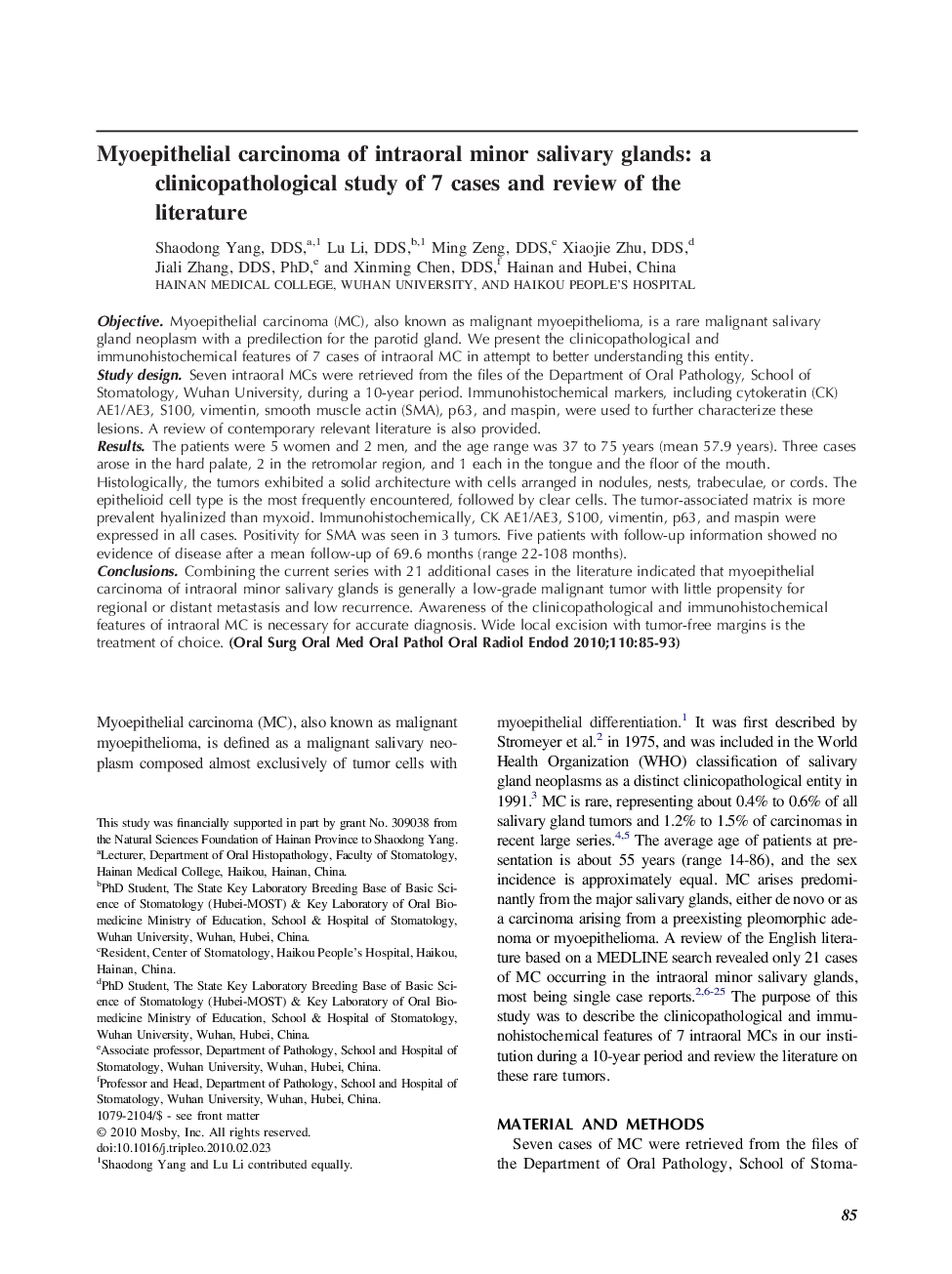| Article ID | Journal | Published Year | Pages | File Type |
|---|---|---|---|---|
| 3167555 | Oral Surgery, Oral Medicine, Oral Pathology, Oral Radiology, and Endodontology | 2010 | 9 Pages |
ObjectiveMyoepithelial carcinoma (MC), also known as malignant myoepithelioma, is a rare malignant salivary gland neoplasm with a predilection for the parotid gland. We present the clinicopathological and immunohistochemical features of 7 cases of intraoral MC in attempt to better understanding this entity.Study designSeven intraoral MCs were retrieved from the files of the Department of Oral Pathology, School of Stomatology, Wuhan University, during a 10-year period. Immunohistochemical markers, including cytokeratin (CK) AE1/AE3, S100, vimentin, smooth muscle actin (SMA), p63, and maspin, were used to further characterize these lesions. A review of contemporary relevant literature is also provided.ResultsThe patients were 5 women and 2 men, and the age range was 37 to 75 years (mean 57.9 years). Three cases arose in the hard palate, 2 in the retromolar region, and 1 each in the tongue and the floor of the mouth. Histologically, the tumors exhibited a solid architecture with cells arranged in nodules, nests, trabeculae, or cords. The epithelioid cell type is the most frequently encountered, followed by clear cells. The tumor-associated matrix is more prevalent hyalinized than myxoid. Immunohistochemically, CK AE1/AE3, S100, vimentin, p63, and maspin were expressed in all cases. Positivity for SMA was seen in 3 tumors. Five patients with follow-up information showed no evidence of disease after a mean follow-up of 69.6 months (range 22-108 months).ConclusionsCombining the current series with 21 additional cases in the literature indicated that myoepithelial carcinoma of intraoral minor salivary glands is generally a low-grade malignant tumor with little propensity for regional or distant metastasis and low recurrence. Awareness of the clinicopathological and immunohistochemical features of intraoral MC is necessary for accurate diagnosis. Wide local excision with tumor-free margins is the treatment of choice.
